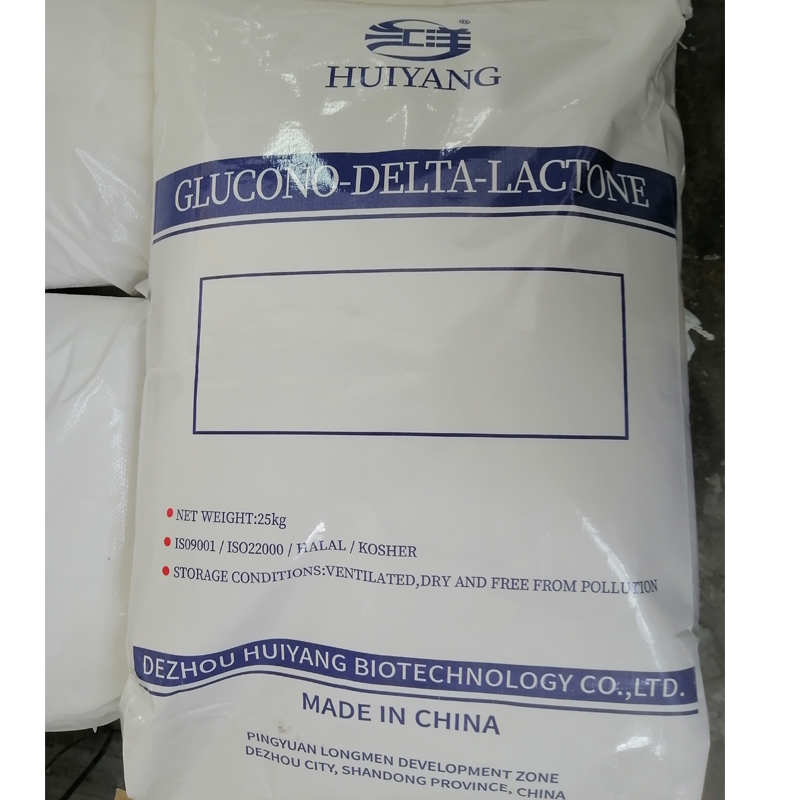-
Categories
-
Pharmaceutical Intermediates
-
Active Pharmaceutical Ingredients
-
Food Additives
- Industrial Coatings
- Agrochemicals
- Dyes and Pigments
- Surfactant
- Flavors and Fragrances
- Chemical Reagents
- Catalyst and Auxiliary
- Natural Products
- Inorganic Chemistry
-
Organic Chemistry
-
Biochemical Engineering
- Analytical Chemistry
- Cosmetic Ingredient
-
Pharmaceutical Intermediates
Promotion
ECHEMI Mall
Wholesale
Weekly Price
Exhibition
News
-
Trade Service
Food Partners Reuters August 17, Hunan Province, market supervision and management bureau announced a new food sampling information
.
Recently, the bureau organized food safety sampling of 1009 batches of samples in 21 categories, includingprocessed food products, meat products , dairy products , soy products , catering food, edible agricultural products , condiments , beverages , quick-frozen foods , potatoes and puffed foods .
In the inspection , 7 batches of samples were found to be unqualified.
.
Recently, the bureau organized food safety sampling of 1009 batches of samples in 21 categories, includingprocessed food products, meat products , dairy products , soy products , catering food, edible agricultural products , condiments , beverages , quick-frozen foods , potatoes and puffed foods .
In the inspection , 7 batches of samples were found to be unqualified.
Among the unqualified samples, 6 batches were edible agricultural products
.
Among them, two batches of samples were found to have excessive pesticide residues, namely: the celery sold at Huabanqiao Market in Yueyanglou District, Yueyang City (recommended household: Xu Kun) detected chlorpyrifos residues that did not meet the national food safety standards; Yueyang City Jun The residual amount of procymidone detected in the leeks sold at the quiet vegetable wholesale store in the Haijixing Market in Yueyang (A2 Area -No.
119) did not meet the requirements of the national food safety standards
.
.
Among them, two batches of samples were found to have excessive pesticide residues, namely: the celery sold at Huabanqiao Market in Yueyanglou District, Yueyang City (recommended household: Xu Kun) detected chlorpyrifos residues that did not meet the national food safety standards; Yueyang City Jun The residual amount of procymidone detected in the leeks sold at the quiet vegetable wholesale store in the Haijixing Market in Yueyang (A2 Area -No.
119) did not meet the requirements of the national food safety standards
.
Chlorpyrifos is an organophosphorus insecticide and acaricide of phosphorothioate, with good contact, stomach toxicity and fumigation effects
.
According to the National Food Safety Standard Maximum Residue Limit of Pesticides in Food (GB2763-2019), the maximum residue limit of chlorpyrifos in celery is 0.
05mg/kg
.
The reason for the excessive chlorpyrifos residues in celery may be the illegal use for quick control of pests
.
.
According to the National Food Safety Standard Maximum Residue Limit of Pesticides in Food (GB2763-2019), the maximum residue limit of chlorpyrifos in celery is 0.
05mg/kg
.
The reason for the excessive chlorpyrifos residues in celery may be the illegal use for quick control of pests
.
Procymidone is a broad-spectrum systemic high-efficiency bactericide.
It has a significant effect on gray mold and sclerotinia sclerotiorum that occur under low temperature and high humidity conditions, but the strains are easy to develop resistance to it
.
According to the National Food Safety Standard Maximum Residue Limit of Pesticides in Food (GB 2763-2019), the maximum residue limit of procymidone in chives is 0.
2mg/kg
.
The reason why the procymidone in leeks exceeds the standard may be that the vegetable farmers did not observe the picking interval and increased the amount of medicine used to quickly control the disease, resulting in the failure to degrade below the standard limit value when it was marketed
.
It has a significant effect on gray mold and sclerotinia sclerotiorum that occur under low temperature and high humidity conditions, but the strains are easy to develop resistance to it
.
According to the National Food Safety Standard Maximum Residue Limit of Pesticides in Food (GB 2763-2019), the maximum residue limit of procymidone in chives is 0.
2mg/kg
.
The reason why the procymidone in leeks exceeds the standard may be that the vegetable farmers did not observe the picking interval and increased the amount of medicine used to quickly control the disease, resulting in the failure to degrade below the standard limit value when it was marketed
.
In addition, three batches of samples were found to have veterinary drug residues, which were sold at Huabanqiao Market (Sale Household: Gao Jianhua) in Yueyanglou District, Yueyang City, and from Liu Guoxiang, Gaojimiao Village, Gaojimiao Town, Shishou City, Hubei Province Nicarbazine residues detected in chicken meat do not meet national food safety standards; Nicarbazine residues detected in chicken meat sold by Yongjun Frozen Food Business Department in Miluo City do not meet national food safety standards; sold by Xinxingwang Food Wholesale Department of Miluo City The florfenicol residues detected in the eggs did not meet the requirements of the national food safety standards
.
.
Nicarbazine has a good control effect on a variety of Eimeria coccidiosis in chickens, and has the characteristics of easy absorption and long-term effect
.
According to the National Food Safety Standard Maximum Residue Limit of Veterinary Drugs in Food (GB 31650-2019), the maximum residue limit of Nicarbazine in chicken muscle is 200μg/kg
.
The reason why Nicarbazine exceeds the standard in chicken may be due to the rapid control of the disease during the breeding process, the illegally increasing the dosage of the drug or the non-compliance with the withdrawal period regulations, which caused the drug residue in the product to exceed the standard when it was on the market
.
.
According to the National Food Safety Standard Maximum Residue Limit of Veterinary Drugs in Food (GB 31650-2019), the maximum residue limit of Nicarbazine in chicken muscle is 200μg/kg
.
The reason why Nicarbazine exceeds the standard in chicken may be due to the rapid control of the disease during the breeding process, the illegally increasing the dosage of the drug or the non-compliance with the withdrawal period regulations, which caused the drug residue in the product to exceed the standard when it was on the market
.
Florfenicol, also known as florfenicol, is an animal-specific antibacterial drug approved by the Ministry of Agriculture.
It is mainly used for bacterial diseases of pigs, chickens, and fish caused by sensitive bacteria
.
According to the National Food Safety Standard Maximum Residue Limits of Veterinary Drugs in Food (GB 31650-2019), florfenicol is forbidden during the laying period of poultry
.
It is mainly used for bacterial diseases of pigs, chickens, and fish caused by sensitive bacteria
.
According to the National Food Safety Standard Maximum Residue Limits of Veterinary Drugs in Food (GB 31650-2019), florfenicol is forbidden during the laying period of poultry
.
In addition, another batch of samples found that cadmium (calculated as Cd) did not meet the requirements of the national food safety standards: beef sold at the Nanmen Market in Zhanghua Town, Huarong County (stall household: Pan Xianxiang)
.
.
Cadmium is an accumulative heavy metal element that can enter the human body through the food chain
.
According to the "GB 2762-2017 National Food Safety Standard Limits of Contaminants in Foods", the limit of cadmium in meat (except the offal of livestock and poultry) is ≤0.
1mg/kg
.
The reason for the excessive cadmium in beef may be caused by the enrichment of cadmium in the environment during the growth process
.
.
According to the "GB 2762-2017 National Food Safety Standard Limits of Contaminants in Foods", the limit of cadmium in meat (except the offal of livestock and poultry) is ≤0.
1mg/kg
.
The reason for the excessive cadmium in beef may be caused by the enrichment of cadmium in the environment during the growth process
.
In addition to edible agricultural products, another batch of catering foods was found to be unqualified, including: cyclamate (calculated as cyclohexyl sulfamic acid) and sodium saccharin (calculated as saccharin) from steamed buns sold at Jinshi Huji Breakfast Shop ) Does not meet the requirements of national food safety standards
.
.
For the unqualified food found in the random inspection, the Hunan Provincial Market Supervision Bureau has instructed the market supervision departments of Yueyang, Changde and other places to organize verification and disposal, and urge food producers and operators to take measures such as removing the shelves, sealing up, and recalling substandard products to control risks.
Violations of laws and regulations shall be dealt with strictly in accordance with the law; the risk prevention and control measures taken by relevant food producers and operators and the verification and disposal conditions shall be disclosed to the public in a timely manner
.
Violations of laws and regulations shall be dealt with strictly in accordance with the law; the risk prevention and control measures taken by relevant food producers and operators and the verification and disposal conditions shall be disclosed to the public in a timely manner
.
Announcement of Hunan Provincial Market Supervision and Administration Bureau on the Sampling Inspection of Food Safety of 1009 Batches (No.
9 of 2021) Unqualified Sample Information
9 of 2021) Unqualified Sample Information
(Source: Hunan Provincial Market Supervision Administration )
Food Safety Sampling Inspection Unqualified Food Information Sheet.
pdf Related report: Hunan Provincial Market Supervision Administration Announcement on Food Safety Sampling Inspection of 1009 Batches (No.
9 of 2021)
pdf Related report: Hunan Provincial Market Supervision Administration Announcement on Food Safety Sampling Inspection of 1009 Batches (No.
9 of 2021)
This article is edited by Foodmate.
com Food Information Center.
Unauthorized reprinting is prohibited.
If you need to reprint, please contact and get authorization to reprint, please contact news@foodmate.
net
.






